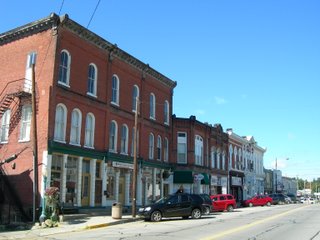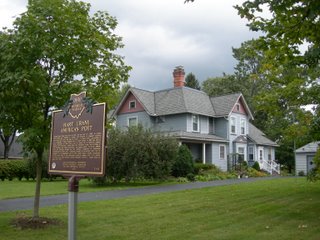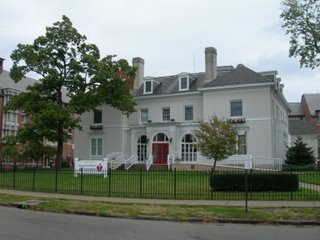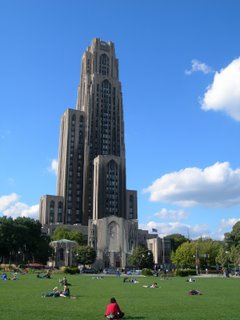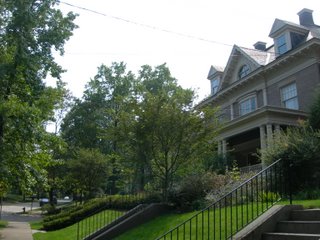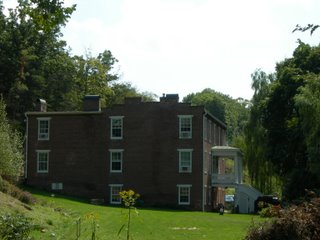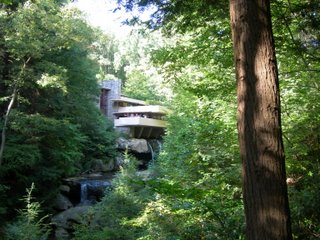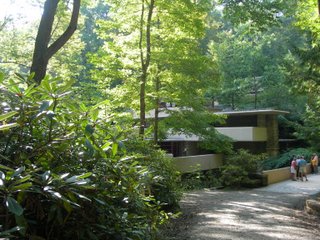Red Hats, Malabar, and Lauren Bacall
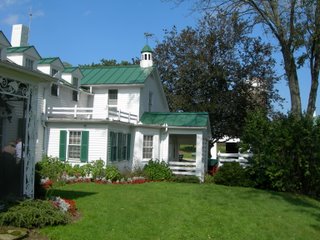
I visited Malabar Farm State Park in the midst of an invasion. It was a warm, perfectly clear early fall day, and the valley was as captivating as Louis Bromfield had described in several of his books. Arriving at the new visitor’s center which had opened only three days earlier, I learned that I would have to wait an hour for the next house tour. So, I decided that I would practice my country meadering and just walk about the fields, look at the animals and the garden and listen to the sounds of nature while I tried to absorb the soul-penetrating blue of the nearly cloudless sky. Except for a couple of retirees and a family of Amish children, I had the place to myself.
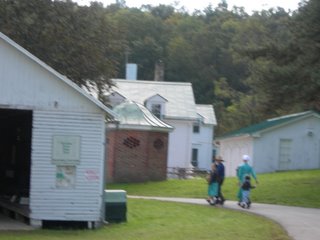 But- why did I want to come here anyway?
But- why did I want to come here anyway?Louis Bromfield is far from a household name. Winner of the Pulitzer Prize, writer of over thirty books, successful Hollywood screenwriter (The Rains Came, Mrs. Parkington) and agricultural innovator, Bromfield was well-known in the 30’s, 40’s and 50’s for his popular fiction and his connection to other famous writers and and movie stars. He helped Hemingway get published and had a long-standing correspondence with Edith Wharton on one of his favorite topics- gardening. Malabar Farm is the home that he built when he returned to the U.S. from France in the late thirties when the Second World War was imminent. Bromfield loved France and had lived in the French countryside near Senlis ,north of Paris. He had studied agriculture at Cornell and journalism at Columbia and was passionate about both. Bereft of the human tragedy that he saw unfolding in Europe, Louis (Louee) was ready to find a new home in the sylvan valleys of his childhood home, Richland Co., Ohio. In his book, Pleasant Valley, he describes his motivation for leaving the fast paced life of a sought after author. He said “When I returned home, I knew that permanence, continuity, alone was what I wanted, not the glittering life of New York and Washington, not the intellectual life of universities. What I wanted was a piece of land which I could love passionately, which I could spend the rest of my life in cultivating, cherishing and improving… a piece of land upon which I might leave the mark of my character, my ingenuity, my intelligence, my sense of beauty- perhaps the only real immortality man can have. I cannot see that man could wish a better afterlife than the peace of oblivion and the immortality that rests in houses and trees and vines and old walls.” (p9) Bromfield wanted to bring his wife and three girls to a place that would truly mean “home.”
As it approached time for my tour. I positioned myself on the porch of the house anticipating seeing this vintage house with the original Grandma Moses paintings, mass of rooster figures (how French) and star memorabilia. Suddenly, I turned to find a swarm of ladies in bright red and purple climbing the steps to the porch. These stalwart members of the Mt. Gilead, Ohio Red Hat Society were about to take Malabar by storm. Thus me and my twenty-eight reddish purple babes were about to become a team. Who were these women and- WHY? The Red Hat Society was begun in the 1990’s by Sue Ellen Cooper (referred to as Queen Mother). She explains “The Red Hat Society began as a result of a few women deciding to greet middle age with verve, humor, and élan. We believe silliness is the comedy relief of life, and since we are all in it together, we might as well join red-gloved hands and go for the gusto together. Underneath the frivolity, we share a bond of affection, forged by common life experiences and a genuine enthusiasm for wherever life takes us next.” These women certainly reflected this credo.
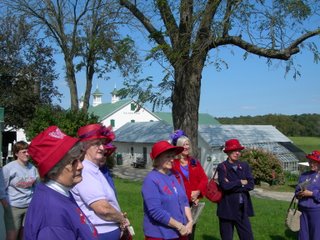
As we toured the house and learned about all of the mid-century stars who had visited regularly, film greats like Tyrone Power, Myrna Loy and Kay Francis, it was great to experience the group spirit and attitude of helping and supporting each other that these women displayed. Nobility and good humor have far more in common than I might have imagined. Malabar farm has over thirty rooms. The most famous, of course, was the guest bedroom where Humphrey Bogart and Lauren Bacall spent their wedding night. The guide was careful to point out that the room had twin beds, but added that the beds were on rollers. This was Bogart’ fourth marriage and Bacall’s first, and the last for both. They were to be married in the garden, but because they had used the phone and, of course, in 1945 everyone had a party line, word

got out that these famous stars were to be married at noon, so the whole town of Lucas, Ohio showed up. The wedding therefore was held in the grand entrance hall, However, the happy couple did go out to wave to the throng after the ceremony, and the party that followed was legendary.
Louis Bromfield was truly devoted to improving farming and making it more in tune with the preservation of the land. If you were a guest in his house, then you had chores. If you wanted to eat, you needed to work and a note delineating your daily task would be placed on your breakfast plate with your napkin. The State Park continues to use many of the land use and recycling ideas that Bromfield started. He was successful, it seems, in making this new endeavor in his beloved valley truly into his “home.”
I left my new red-hatted friends after I had helped them climb onto the wagon for their Malabar Farm wagon ride. Their smiles and chatter seemed a fitting testimony to their commitment to each other and to good humored engagement with life. Bromfield was ever the optimist, surrounding himself with family, his beloved Boxers and friends and secure in his life affirming vision of finding a place that is home which allowed him to give something in return for all of the beauty and wonder that life had provided him. He would have liked having the Red Hat Society at the “Farm.”


